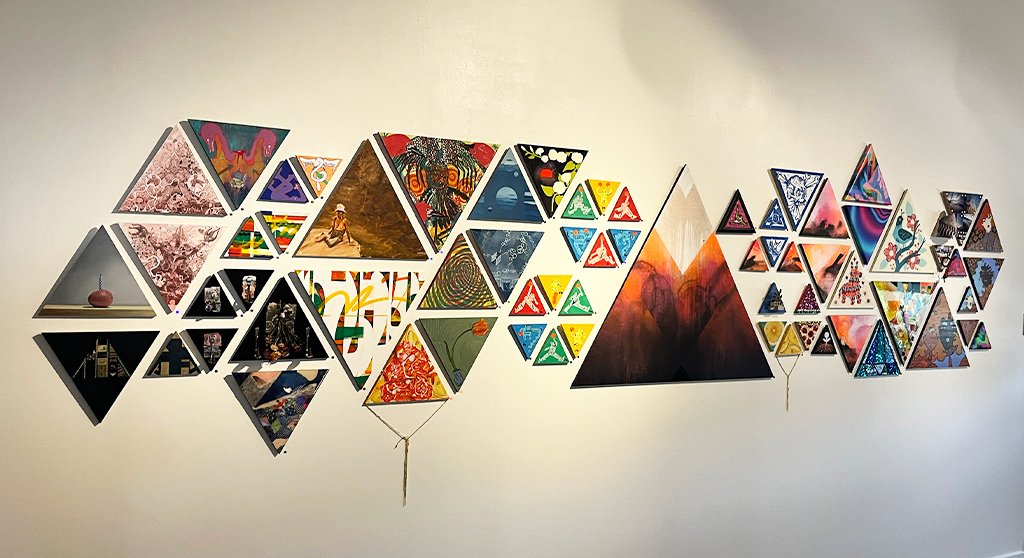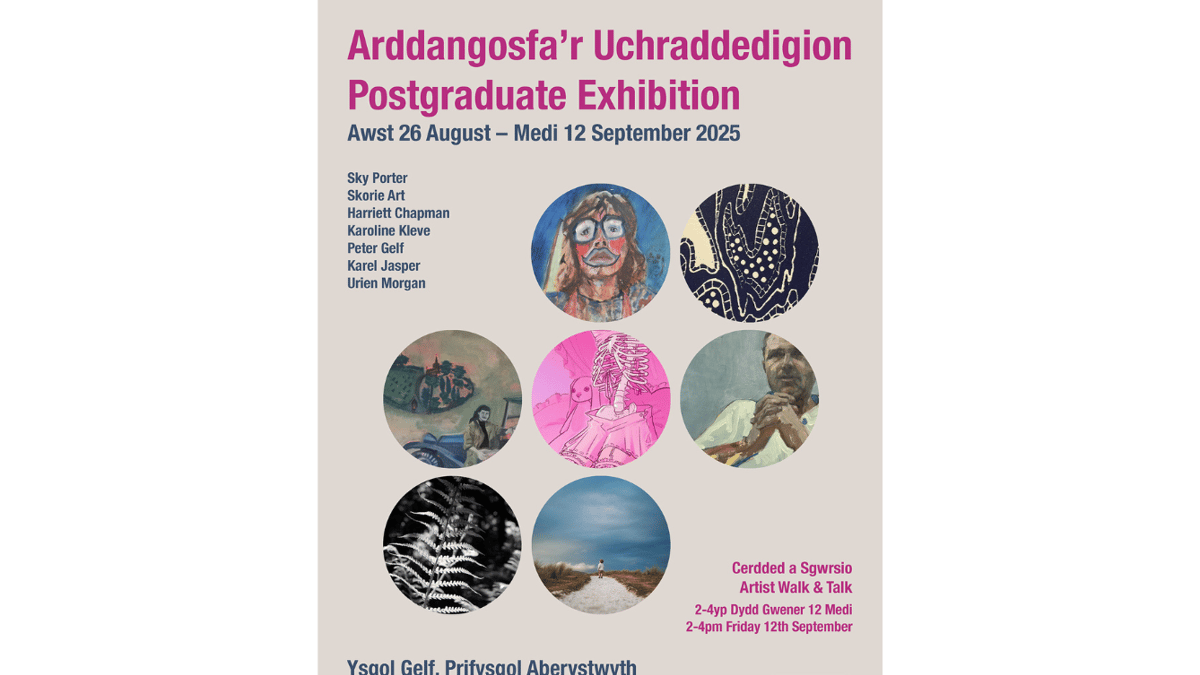This fall, Schweinfurth Art Center in Auburn will display a nationally significant exhibit that highlights the practice of printing on textiles in the exhibit “Beyond the Surface: Contemporary Artists and Printed Textiles.”
It is the first exhibition to focus exclusively on printed textiles since the Smithsonian American Art Museum and Renwick Gallery’s 1978 exhibition “Printed, Painted, and Dyed: The New Fabric Surface.”
The exhibit is curated by Caroline Kipp and features eight contemporary artists at various stages in their careers: Danielle Andress, Nancy Crow, Emily Dormier, Sarah Fairchild, Letitia Huckaby, Krystle Lemonias, Stephanie Santana, and Gerri Spilka.
“This exhibit provides a long overdue look at the interplay between textiles and printing, and how it has influenced contemporary artists,” said Schweinfurth Executive Director Donna Lamb. “We are thrilled to feature this work as part of our long tradition of supporting textile artists.”
Each artist in “Beyond the Surface” delves into the nuances of their conceptual and material concerns, richly contributing to an exhibition-wide dialogue about the field of printed textiles as an expansive mode of contemporary artistic practice.

Danielle Andress, “Sierra,” 2023. Handwoven polyester thread with dye sublimation printing.Provided image
- Danielle Andres of Chicago, IL, prints imagery from desktop screensavers onto handmade weavings to highlight that the “real” and the “digital” are human inventions that perpetually cross-fertilize each. Her landscapes and assemblages investigate people’s relationship with nature, architecture, and everyday objects.
- Nancy Crow of Baltimore, Ohio, is a leader in contemporary quiltmaking since the 1970s whose recent work turns monoprints into layered quilted drawings on fabric that she titles “Self-Portraits.” Her series captures the energy and immediacy of traditional mark-making, turning her drawings on fabric into layered, printed quilts that vibrate with visual tension.
- Emily Dormier of Chicago, IL, addresses the decay of memory and altering of perception by creating large scale digital scans where she screen prints, scan, and reprint an image over and over, each time introducing and accentuating mistakes and digitization. Her screen-printing builds layers of images and visual depth that recall the formation and retention of memory through periods of heightened emotions or trauma.
- Sarah Fairchild of Queens, NY, combines painting, silk screen, collage, foil, flocking, and crystals onto fabric to depict common weeds and flowers as a comment on what nature is. Her ornamented prints glow with fluorescent colors and shine from bedazzled crystals and metallic foils to blur the boundaries between what is considered “natural” versus “artificial.”
- Letitia Huckaby of Fort Worth, TX, prints images of people, places, and events on cotton fabric, some already printed, that focus on history, culture, and storytelling. Huckaby uses cotton to symbolize her connection to her cultural ancestry and the resilience of community and care in African-American life amid the ongoing legacy of oppression in the United States.
- Krystle Lemonias of Phillipsburg, NJ, uses old clothes, bedsheets, diapers, and other materials to create portraits or assemblages that reference mammy stereotypes. Her work explores the integral role that women’s domestic employment contributes towards society, and how these professions are sites of negotiation between class, gender, race, and economic inequity.
- Stephanie Santana of Brooklyn, NY, layers hand-printed images and patterns as a way of understanding lineage and the spaces between memory, imagination and the material evidence of Black life.
- Gerri Spilka of Philadelphia, PA, uses bold colors and dynamic shapes to bring together quilting and modern abstraction and create images that reflect the duality of urban existence as both anonymous and a site of community, and the urban landscape as both sleek and gritty.

Krystle Lemonias, “My man can eat eeh; go put dis in the gahbage,” 2021. Baby clothes, Lara bar packaging, relief print on upholstery fabric.Provided image
The exhibition will be on display at Schweinfurth Art Center from Aug. 31 through Oct. 20, 2024. Curator Caroline Kipp will lead a panel discussion featuring some of the exhibiting artists at 3 p.m., followed by an opening reception from 4 to 6 p.m. Both events are free and open to the public.
Kipp will also participate in an online Textile Talk on Sept. 4. The weekly online series is organized by the International Quilt Museum, Quilt Alliance, SAQA, and Surface Design Association.
The Schweinfurth has also planned two adult fiber workshops and a youth class focusing on printed textiles to accompany the exhibition:
- Syracuse artist Ellen M. Blalock will teach a 3-day workshop called “The Layered Surface: Fusions, Transparency, and Photos” from Aug. 30 to Sept. 1, 2024. Participants will explore several methods of using photographs and layering shears fabrics and non-woven materials.They will experiment with drawing, painting, and stitching on images infused into cloth and learn how to incorporate it into fiber pieces.
- Instructor Madeline Bartley Gambacorta will introduce the art of printmaking through repeated patterns in a 2-day workshop, entitled “Patterns on Fabric,” on Sept. 21 and 22, 2024. Participants will focus on textile design to develop skills and explore combinations in color, line and shape through block printing, handmade stencils, and simple embroidery on fabric.
Students age 7 to 11 can sign up for a 6-week Art After School program called “See What You Can Sew! Machine Sewing and Printed Textiles” that meets Wednesday afternoons from Sept 11 to Oct. 16.
Students will use sewing machines, learn different stitching techniques, and even get to design their own fabrics. Projects include pillowcases, lined tote bags, block printing on fabric, and a collaborative quilt project.
Find more information and registration for the two workshops on the Schweinfurth’s website at https://schweinfurthartcenter.org/studio-schweinfurth/.
Information and registration for the Art After School program is available at https://schweinfurthartcenter.org/youth-classes/.
The exhibition is curated by Caroline Kipp and sponsored by the Coby Foundation, Furthermore Foundation – a program of the J.M. Kaplan Fund, Nelson B. Delavan Foundation, and the New York State Council on the Arts.






